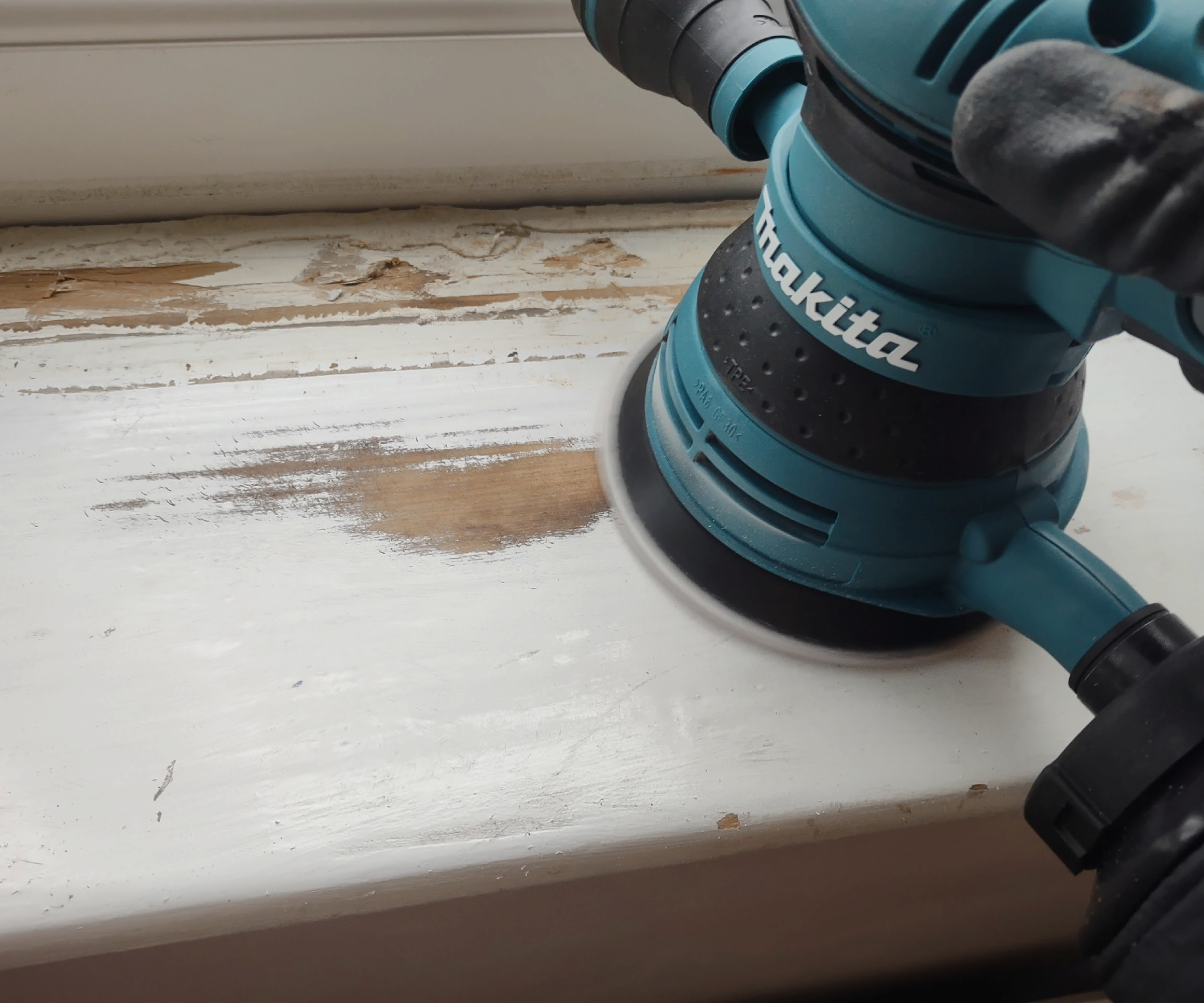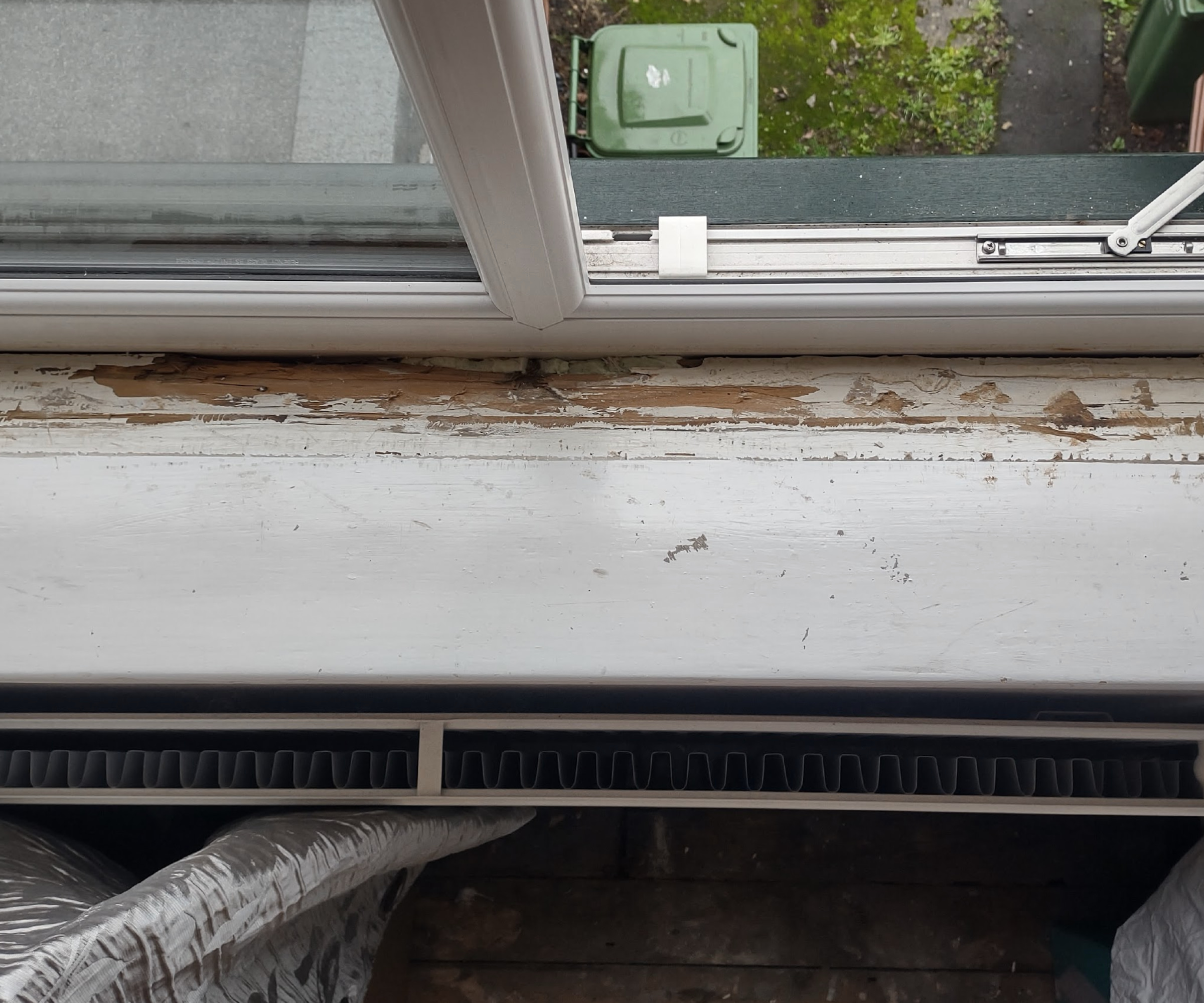Homebuilding Verdict
The Makita BO5041 Random Orbit Sander impresses with its powerful performance, versatility in sanding a range of surfaces, and its user-friendly features – making it a top choice for both DIYers and professionals.
Pros
- +
Superior sanding performance
- +
Variable speed dial and lock-on button
- +
Easy to handle
Cons
- -
Some users may prefer a cordless sander
- -
Relatively short power cable (2 metres)
You can trust Homebuilding & Renovating.
The Makita BO5041 Random Orbit Sander is a mains-powered orbital sander, suitable for craftspeople and tradespeople alike. As an avid DIYer, sanding is a common task in my home renovation projects – so I was eager to test this model from the famous Japanese toolmaker.
The BO5041 claims to be more powerful and faster than many of its competitors, and promises to provide a smoother finish. All of this sounds good on paper – but did this random orbit sander have the grit to make the grade?
Read on to find out how well the Makita BO5041 performed in my hand-on testing, which included tasks such as removing paint from a wooden window sill, and sanding various sample materials.
What is The Makita BO5041 Random Orbit Sander?
The Makita BO5041 Random Orbit Sander is an electric hand sander capable of sanding a comprehensive range of household surfaces and craft materials, such as sanding wood, metals and plastics, and non-toxic painted surfaces.
You can use the BO5041 for tasks like finishing surfaces, removing paint from woodwork, sanding wooden floors and taking down the size of workpieces.
Random orbit sanders like this one are at their best when used to sand a large, flat surface. The randomised action of the sander means the tool will usually leave fewer streaks, swirls or machine marks than you’d sometimes get with a different types of sander.
Specifications



- Model: BO5041
- Our rating: 5/5
- Sheet size: 125 mm (standard)
- Orbits per minute: 4,000 - 12,000
- Dimensions (L x W x H): 218 mm x 123 mm x 153 mm
- Net weight: 1.4 kg
- Power source: mains-powered (corded)
- Features: variable speed dial, detachable front grip, dust collection bag, lock-on switch
- Input power: 300 watts
- Warranty: 1 year (extends to 3 years if registered)
What's included?
Bring your dream home to life with expert advice, how to guides and design inspiration. Sign up for our newsletter and get two free tickets to a Homebuilding & Renovating Show near you.
- Detachable front grip
- 1 x sanding sheet
- Dust collection bag
- Instruction booklet
Does the Makita BO5041 effectively?



The Makita BO5041, which can be purchased on Amazon, proved highly impressive during my hands-on testing, delivering a winning combination of power, control and user-friendliness.
Sanding window sills
First, I used the BO5041 to sand a painted window sill. I needed to remove a layer of paint and left-over adhesive from a window ledge, to prepare the ledge for filling and repainting. The sander removed the unwanted materials with minimal effort, and worked very quickly compared to other orbital sanders I’ve used for similar jobs.
The maximum power setting is particularly impressive, providing rapid sanding without causing excessive vibration or making the tool difficult to control. If you’ve got a lot of sanding to do, the BO5041’s high-powered sanding will save you a lot of time and effort. However, I’d recommend switching to a lower speed when fine control is required – for instance, when your aim is to sand away just a little material.
Sanding wood
To really put the BO5041 through its paces, I also tested it on various other workpieces, including a block of oak – one of the most difficult-to-sand hardwoods commonly used in a DIY context. Whatever material we used it on, Makita’s sander removed material and applied a smooth finish quickly and easily. Furthermore, in all of my test activities with the BO5041, the surfaces sanded came out very smooth and free from machine marks.
Dust extraction
A detachable dust bag (included) can be fitted to the dust extraction port of the BO5041 to collect some of the dust from sanding. Detaching, emptying and attaching the bag proved simple during my testing – and the amount of dust that emptied out into my dustbin offered proof that the attachment had captured a good share of dust. With that said, if you’ve done much sanding in your time, you’ll be aware that this type of attachment can only do so much to reduce the volume of dust released into the room.
Noise levels
Like many of the best orbital sanders, the BO5041 operates noisily, with a sound power rating of 92 dB. This comes with the territory.
Is the Makita BO5041 easy to use?

The Makita BO5041 has some outstanding features that set it apart from the average DIY sanding tool:
The lock button: As well as a switch trigger to activate sanding, there’s also a lock button that can be pressed to make the sander operate continuously, allowing you to take your finger off the trigger. This will make a difference, during long-duration jobs. I found it perfectly easy to use the lock button during sanding. It can be released by pressing the trigger, when you want to stop the sander.
Detachable front grip: Unlike some of the other random orbit sanders I’ve used, the BO5041 comes with a detachable front grip accessory bundled in, allowing you to comfortably hold the tool two-handed during sanding. The need for this feature tells you something about the power of this sander, which greatly exceeds that of most cordless models. If we were being hyper-critical, we’d say this detachable grip is a little too stubby. Nonetheless, it’s a useful option.
Variable speed: The BO5041 works at variable speed, so you can choose slower or faster settings to suit the task at hand. We were really impressed with the user-friendly dial provided for this purpose, which is inset into the top of the tool, exactly where your thumb will rest. It’s recommended to use the fastest speed settings (between 4 and 5 on the dial) for regular sanding, while slower settings should be used for finishing (2 to 4) and polishing (1).
As far as ease-of-use is concerned, my only minor criticism of the BO5041 is that the dust bag sometimes gets slightly in the way when the sander is used on a flat surface. But all things considered, using the BO5041 is a breeze. With the right speed setting selected and the lock-on button pressed in, all that’s left for you to do is hold the sander wherever you want it to sand.
Is the Makita BO5041 right for you?

If you’re happy to pay for a fairly expensive random orbit sander, then you won’t find many reasons not to choose the BO5041. It’s more powerful and easier to control than most other tools of its type that are sold at a similar price.
The BO5041 might not be for you, however, if you overwhelmingly prefer cordless power tools. Without a doubt, there are a few downsides that come with the BO5041’s main-powered design, and it’s worth weighing these up before you buy. For instance, if you need to sand in high-up places – such as the upper sections of a wood-panelled wall, then the BO5041’s relatively short power cable might limit your mobility and reach. Similarly, users who do a lot of sanding outdoors will probably need to use the tool with an extension lead. With a cordless random orbit sander such as the Ryobi R18ROS-0, you wouldn’t run into the same problems.
On the other hand, the corded design of the Makita BO5041 arguably brings more positives than negatives. Because the tool runs off mains power, you can simply plug it into the wall and use it for as long as you like. This is in stark contrast to most cordless random orbit sanders, which tend to drain their batteries quickly due to their high energy requirements. During most other use cases, the power cable is no impediment to the easy use of the BO5041.
Should you buy the Makita BO5041?
I was blown away by this sander’s power, efficiency and ease-of-use. If you’re sure that what you need is a random orbit sander, and you’re willing to spend a little over £100, then the Makita BO5041 will almost certainly be a great choice for you.
Do bear in mind that random orbit sanders like this one are intended mainly for sanding large, flat surfaces – such as sanding painted walls - rather than fine details. Readers who have a lot of intricate features to sand might want to purchase an additional detail sander such as the Bosch PSM 18 Li.
The BO5041 should also be used with standard-size, 125 mm sandpaper discs (like these ones), with holes that match the holes on the tool’s sanding pad.
Remember to wear a good dust mask during sanding, and remove items such as textiles and electronics from the room before you start. Different DIY projects will call for different sandpaper grades and in some cases sanding wood by hand may be the best course of action.
Pete Wise is a freelance writer and keen DIYer from Leeds. Pete's tool reviews have featured in titles including Homebuilding & Renovating, Ideal Home and The Independent. He also writes features and news articles for publications such as The Guardian, BBC Good Food and T3. When he isn't busy writing, Pete can often be found at libraries, pubs and live music venues. He finds tile-cutting strangely zen.

